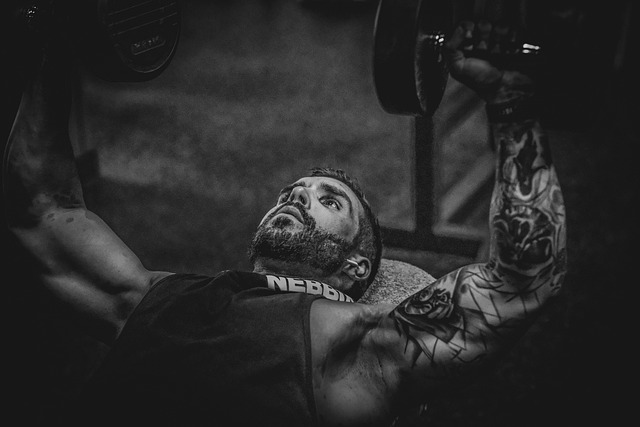In today’s fast-paced world, where work deadlines, meetings, and personal commitments often take precedence, finding time to exercise can feel like an impossible task. However, maintaining a consistent workout routine is not just about physical fitness—it’s also about mental clarity, stress management, and long-term health. For busy professionals, the key lies in optimizing workouts to fit into tight schedules without compromising effectiveness. This article explores the best workout routines tailored specifically for professionals who want to stay fit without sacrificing their productivity.
Why Busy Professionals Need a Structured Workout Routine
Before diving into specific routines, it’s important to understand why structured exercise is crucial for professionals. The demands of modern careers often lead to sedentary lifestyles, poor posture, and high stress levels. Regular physical activity helps counteract these issues by improving cardiovascular health, boosting energy levels, enhancing focus, and reducing anxiety. Moreover, studies have shown that short bursts of exercise can significantly improve cognitive function and decision-making—a perfect benefit for those navigating demanding work environments.
The challenge, however, lies in balancing fitness with professional responsibilities. The solution? Efficient, science-backed workout routines designed to maximize results in minimal time.
1. High-Intensity Interval Training (HIIT)
High-Intensity Interval Training (HIIT) has gained immense popularity among busy individuals due to its efficiency and effectiveness. A typical HIIT session lasts between 15 to 30 minutes but delivers the same—or even greater—benefits as longer traditional workouts.
How It Works:
HIIT alternates short bursts of intense exercise with brief recovery periods. For example:
- 30 seconds of sprinting followed by 15 seconds of walking.
- 40 seconds of burpees followed by 20 seconds of rest.
Why It’s Ideal for Professionals:
- Time-Saving: You can complete a full-body workout in under half an hour.
- No Equipment Needed: Many HIIT exercises use bodyweight, making them accessible anywhere—even at home or during business trips.
- Afterburn Effect: HIIT boosts your metabolism, helping you burn calories long after the workout ends.
Sample Routine:
- Warm-up: 5 minutes of dynamic stretches or light jogging.
- Circuit (Repeat 3-4 times):
- Jump squats: 30 seconds
- Push-ups: 30 seconds
- Mountain climbers: 30 seconds
- Rest: 15 seconds
- Cool-down: 5 minutes of stretching.
2. Strength Training with Minimal Equipment
Strength training is essential for building muscle, improving bone density, and preventing age-related decline. While many assume strength workouts require hours at the gym, they can be adapted to suit busy schedules using minimal equipment like dumbbells, resistance bands, or even household items.
Benefits for Professionals:
- Increased Productivity: Strength training releases endorphins, which enhance mood and concentration.
- Improved Posture: Desk jobs often lead to slouching; strengthening core and back muscles helps correct this.
- Long-Term Health: Building muscle mass supports metabolism and reduces injury risk.
Sample Routine:
- Warm-up: 5 minutes of arm circles, leg swings, and jumping jacks.
- Main Workout (3 rounds):
- Dumbbell goblet squats: 12 reps
- Resistance band rows: 12 reps
- Plank hold: 30-60 seconds
- Overhead dumbbell press: 12 reps
- Cool-down: Stretch hamstrings, shoulders, and chest.
3. Morning Yoga or Mobility Workouts
For professionals who prefer starting their day with mindfulness and flexibility, morning yoga or mobility workouts are excellent options. These routines help awaken the body, reduce stiffness from prolonged sitting, and set a positive tone for the day ahead.
Why Choose Yoga/Mobility?
- Stress Reduction: Deep breathing and mindful movements lower cortisol levels.
- Flexibility and Balance: Prevents injuries caused by repetitive motions or poor posture.
- Mental Clarity: Sets a calm yet focused mindset for tackling work challenges.
Sample Routine:
- Sun Salutations: 5 cycles to warm up.
- Key Poses:
- Downward Dog: Hold for 30 seconds.
- Warrior II: Hold for 30 seconds per side.
- Seated Forward Fold: Hold for 30 seconds.
- Finish with Child’s Pose and deep breathing for relaxation.
4. Lunch Break Walks or Stair Climbing
Sometimes, the simplest activities yield significant benefits. If you’re unable to dedicate large chunks of time to exercise, incorporating movement into your daily routine can make a big difference. Walking or climbing stairs during lunch breaks is an easy way to stay active while recharging mentally.
Tips for Maximizing Impact:
- Aim for at least 10,000 steps per day using a pedometer or smartphone app.
- Take brisk walks to elevate your heart rate slightly.
- Use staircases instead of elevators whenever possible.
Benefits:
- Boosts Energy: Physical activity increases oxygen flow to the brain, combating afternoon fatigue.
- Encourages Mindfulness: A quick walk outdoors provides a mental break from screens and tasks.
- Social Opportunity: Invite colleagues to join, fostering team bonding.
5. Evening Recovery Sessions
Evenings are ideal for unwinding and preparing the body for restful sleep. Gentle recovery sessions, such as foam rolling, static stretching, or Pilates, help release tension accumulated throughout the day.
Why Recovery Matters:
- Prevents Burnout: Balances intense workouts with relaxation techniques.
- Improves Sleep Quality: Relaxed muscles and a calm mind promote deeper sleep.
- Reduces Soreness: Enhances blood circulation, aiding muscle repair.
Sample Routine:
- Foam Roll Major Muscle Groups: Quads, calves, back, and glutes.
- Static Stretches:
- Hamstring stretch: Hold for 30 seconds.
- Hip flexor stretch: Hold for 30 seconds per side.
- Chest opener: Hold for 30 seconds.
- End with diaphragmatic breathing exercises.
Tips for Staying Consistent
Creating a sustainable workout habit requires planning and discipline. Here are some practical tips for busy professionals:
- Schedule It: Treat your workout like any other meeting—block time in your calendar.
- Start Small: Begin with 10-minute sessions if needed, gradually increasing duration.
- Be Flexible: Adapt your routine based on your schedule; consistency matters more than perfection.
- Track Progress: Use apps or journals to monitor improvements and stay motivated.
- Prioritize Sleep and Nutrition: Exercise alone won’t yield optimal results without adequate rest and proper fueling.

Leave a Reply